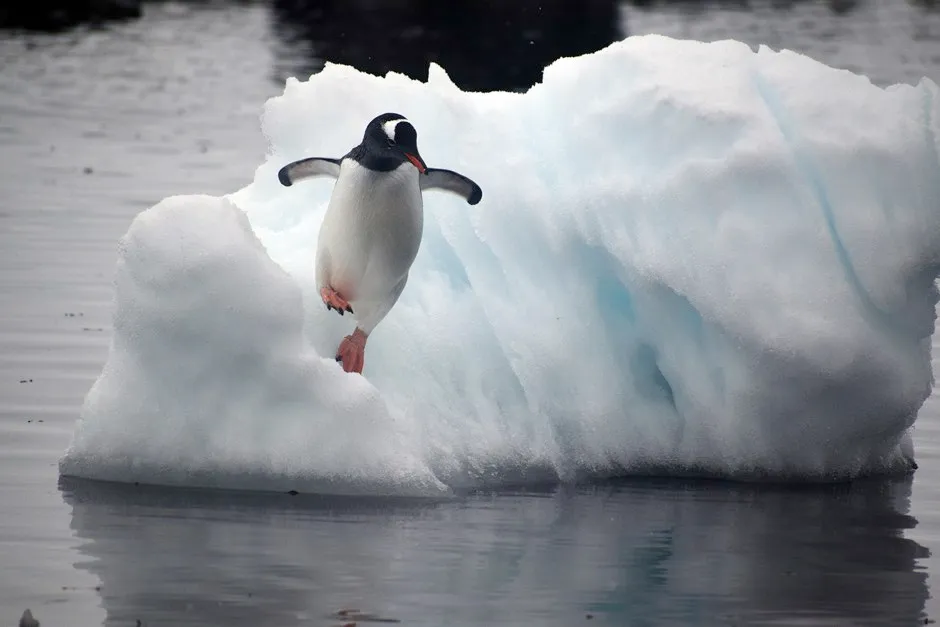Penguins in the Antarctic have seen climate change and human activity impact their natural habitat over the last century.
New research indicates how the waddling birds have dealt with these factors and why some species fare better than others.
Scientists found that gentoo and chinstrap penguins adapted differently to the varying availability of krill – a key food source.
Read more about life in the Antarctic:
- Antarctica: the remarkable life that survives the coldest continent
- Could we move polar bears to Antarctica to prevent their extinction?
- Antarctica is “getting greener” due to climate change
Michael Polito, co-lead author and assistant professor at Louisiana State University, said: “Antarctic krill is a shrimp-like crustacean that is a key food source for penguins, seals and whales.
“When seal and whale populations dwindled due to historic over-harvesting, it is thought to have led to a surplus of krill during the early to mid-1900s.
“In more recent times, the combined effects of commercial krill fishing, anthropogenic climate change, and the recovery of seal and whale populations are thought to have drastically decreased the abundance of krill.”

Researchers analysed the diets of chinstrap and gentoo penguins by looking at chemical signals in feathers collected during explorations of the Antarctic Peninsula during the past century.
The signals indicate what the penguins had eaten.
The findings were published in the Proceedings of the National Academy of Sciences journal.
Our results indicate that historic marine mammal harvesting and recent climate change have altered the Antarctic marine food web over the past century
Kelton McMahon, co-lead author
Tom Hart, co-author and penguinologist at the Department of Zoology, University of Oxford, said: “Given that gentoo penguins are commonly thought of as climate change winners and chinstrap penguins as climate change losers we wanted to investigate how differences in their diets may have allowed one species to cope with a changing food supply while the other could not.
“We wanted to understand why chinstrap penguins have had severe population declines, while gentoo penguin populations have increased in the Antarctic Peninsula over the past half century.”
Reader Q&A: Why can’t penguins fly?
Asked by: Sally Thompson, Burnley
Even the very smallest penguin, the fairy penguin, weighs 1kg, which is about as much as a herring gull. But herring gulls have a 1.4m wingspan, compared with just 32cm for the fairy penguin.
Water is 784 times denser than air, and around 62 million years ago, penguins began evolving adaptations for swimming underwater. Their bones are filled with heavy bone marrow rather than air and they have much larger stomachs for undergoing long fishing trips away from the nest.
Read more:
Scientists found that gentoos and chinstraps primarily fed on krill during the krill surplus in the early to mid-1900s that was caused by seal and whale harvesting.
But in the latter half of the past century, gentoo penguins increasingly showed an adaptive shift from strictly eating krill to including fish and squid in their diets.
However, the chinstrap penguins– with a distinctive strip of of black along their chin – continued to feed exclusively on krill.

Kelton McMahon, co-lead author and assistant professor at the University of Rhode Island, said: “Our results indicate that historic marine mammal harvesting and recent climate change have altered the Antarctic marine food web over the past century.
“Moreover, the differing diet and population responses we observed in penguins indicate that species such as chinstrap penguins, with specialised diets and a strong reliance on krill, will likely continue to do poorly as climate change and other human impacts intensify.”

The researchers from the University of Oxford, Louisiana State University, University of Rhode Island, University of California Santa Cruz, and the University of Saskatchewan predict that the Antarctic Peninsula region will remain a hotspot for climate change and human impacts during the next century.
They believe their research will be beneficial in predicting which species are likely to fare poorly and which will withstand, or even benefit from, future changes.
